Opinion
Evolution of Learning Environments – How Educationists would build Indian School of Future Part 2
Read on for amazing insights into the vision of building the school of the future…
Published
6 years agoon

Ep. 1 | Ep. 2 | Ep. 3 | Ep. 4 | Ep. 5 | Ep. 6 | Ep. 7 | Ep. 8 | Ep. 9 | Ep. 10 | Ep. 11 | Ep. 12 | Ep. 13 | Ep. 14
We were keen to feature views of School Leaders and Educators on 'The Evolution of Learning Environments: Building the Indian School of the Future'. The excitement was palpable. Educationists across the country were preparing to gather at the ScooNews EdBrainstorm with Professor Sugata Mitra on April 2 in Mumbai. In preparation for this exercise to discuss the building the Indian School of the Future, ScooNews invited key delegates at the EdBrainstorm to share their vision on the Evolution of Learning Environments. The result was a smorgasbord of ideas and beliefs, a melange of thoughts and concepts, lively agreements and livelier arguments!
The complete story featured in our April 2018 issue, we are reproducing this online as a series of articles to make it comfortable and easier for our online readers, read the 2nd episode for some more amazing insights into the vision of building the school of the future…
Great teaching backed by technology
The Looking Glass of 2030
We borrow a term ‘VUCA’ used by the US army referring to the environment of the educational scenario that we will bequeath to our future generations of students and learners. VUCA, made popular in his white paper ‘Leading in a VUCA World’ by General George W Casey of the US Army (Retd.), looks at the future as Volatile Uncertain Complex and Ambiguous. According to Gen Casey, we live in a connected but unstable world where stability is a passing phase, instability is the norm, and complexity is accumulating. Things change, beyond our control. Being uncertain, it is difficult to visualize outcomes for the future. Integrating the multiple variables affecting our ecosystem is complex – and perhaps impossible. The future is ambiguous too – as the same data can yield multiple and often competing interpretations. In a VUCA scenario, the personal perquisites that are required in institutions and their leaders are as follows…
Vision, to point the way ahead. Courage to articulate a clear view of the future. Character, because leaders with strong values build strong organisations. ‘Trust becomes the glue that binds organizations together’.
Let’s look at the following words of wisdom…
· Developing and communicating vision and strategy
· Building high performing teams
· Setting the internal and external conditions for success
· Preparing for the future
· Taking care of ourselves
Could this possibly be the mantra for the future of educational institutions? Prof Denis Shirley of Boston College, Massachusetts, and writer of 'The Mindful Teacher', points out that the aim of schooling, always defined as an achievement with reference to standardised test score results, had to evolve to the attainment of worthy goals. Integrity had to be balanced with achievement.
Integrity – • as a personal characteristic; • as a professional disposition, and • as a result of a school system. The traditional ideological concept of Integrity has to be replaced by evidentiary imperatives. Integrity that is insular has to become global. He mentioned that 'love of one's country is a beautiful thing; but why does the love have to stop at the borders?' Referring to the book by Michael Ford 'The Rise of the Robots', Shirley pointed out the future was uncertain and technology was going to change civilizations in a way unprecedented in human history. Professionals in the field of education would have to shift mindsets of achievement orientation to student well-being orientation, if we want safety and peace in the world of tomorrow.
A study conducted on PISA toppers of 2015 by OECD has revealed the trauma that children have gone through in the process of achieving the 'impossible and incredible' scholastic goals; it is too large a cost to their young years. A classroom tool suggested by Shirley was to film the children while they were learning. These short film clips could then be run in faculty meetings to get peer critique on how transaction strategies could be made more effective.
We need to lay a great amount of focus on collaborative effort and sharing between teacher communities and global educational communities, bottom-line being that the issues facing our children, across the world now seem to be acquiring a degree of universality, hitherto not seen in ‘boxed up’ civilizations. Contrary to popular belief, it also has a near global consensus on the fact that Great Teaching backed by technology is progress- but Great Technology backed by poor teaching will be a disaster in the classrooms of the future. As a tribute to all that our noble profession has given us, let’s be to each other and our communities… ‘Yours in the service of education…'
About the author:

Sudeshna Chatterjee is the Director Principal, EuroSchool, Airoli.
Ep. 1 | Ep. 2 | Ep. 3 | Ep. 4 | Ep. 5 | Ep. 6 | Ep. 7 | Ep. 8 | Ep. 9 | Ep. 10 | Ep. 11 | Ep. 12 | Ep. 13 | Ep. 14
You may like
-
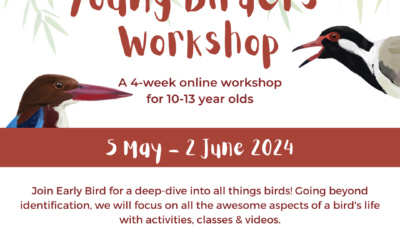

Young Birders’ Workshop Opens Registration for Children Aged 10-13 Years
-
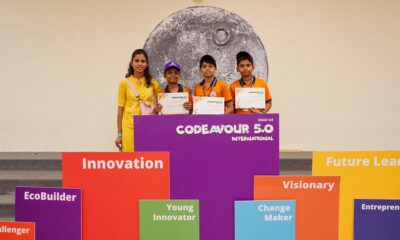

STEMpedia Successfully Completed Codeavour 5.0- India’s National Innovation Fest
-


Reviving School Education: Countering the Coaching Centre Dominance
-


CBSE to Initiate Pilot for National Credit System in Grades 6, 9, and 11
-


The Role of Marketing in Education: Navigating the New Educational Landscape
-


From Overwhelmed to Empowered: Strengthening Educator Skills for Success
-
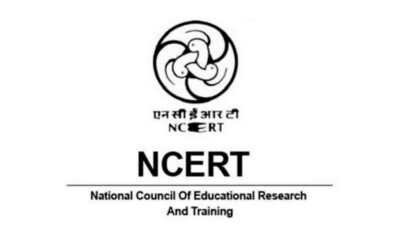

NCERT Introduces Bridge Month Programme for Class 6 Amid Textbook Transition
-


Indian Embassy Advocates for India-US Collaboration in Education Sector
-


Nurturing Healthy Behaviors: The Role of Schools in Shaping Health-Conscious Citizens
-


CBSE Updates Exam Structure for 11th & 12th Class; Concept-based Questions Now 50% of Weightage
Education
Reviving School Education: Countering the Coaching Centre Dominance
Published
5 days agoon
April 11, 2024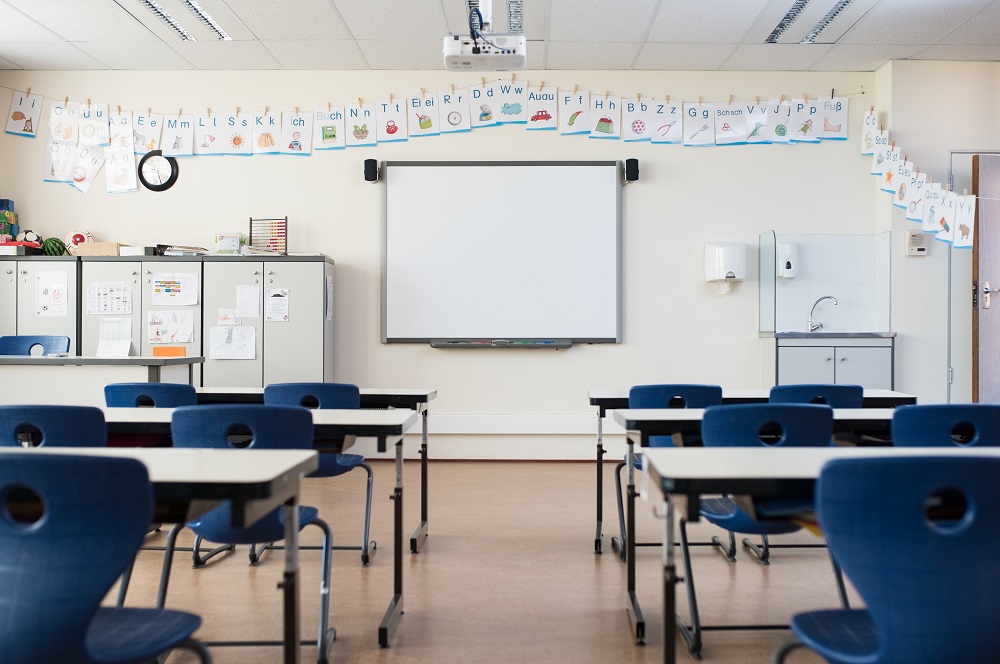
In recent years, a troubling trend has emerged within the educational landscape: the rise of “Dummy Admissions,” where students formally enrolled in schools are effectively abandoning the classroom in favour of coaching institutes. This phenomenon, particularly prevalent from the 11th standard onwards, sees students dropping out of school to prepare for competitive exams under the tutelage of coaching centres, which were originally intended to supplement, not supplant, school education.
The shift has been stark. Coaching, once a support system, has transformed into a parallel education industry, with some arguing it overshadows the broader developmental benefits of traditional schooling. This evolution poses a critical question: How can schools reclaim their role not just as preparatory grounds for board exams but as sanctuaries of holistic education that truly prepare students for life?
The Diminishing Role of Schools
The primary role of any educational institution is to foster an environment conducive to learning, curiosity, and personal growth. Schools are meant to be arenas where young minds receive a balanced education — academically, socially, and emotionally. However, the allure of scoring top marks in competitive exams has tilted the focus sharply towards rote learning and intensive exam preparation, often at the expense of holistic development.
The Coaching Conundrum
Coaching centres operate with a laser focus on results, primarily targeting competitive exams like the JEE, NEET, and others. This narrow approach prioritises immediate academic results over long-term learning and personal development. Students, driven by the pressure to excel in these high-stakes environments, often find themselves estranged from the broader educational experiences that school offers — experiences that are crucial in shaping well-rounded individuals capable of adapting to life’s varied challenges.
Reclaiming the Sanctuary of Education
For schools to regain their central place in the educational journey of students, they must evolve to meet the diverse needs of their students. Here are a few strategies that could help schools reassert their relevance:
- Integrated Curriculum: Schools could integrate aspects of competitive exam preparation into their regular curriculum, thus reducing the need for external coaching. This would allow students to prepare for exams without missing out on the broader educational offerings of the school.
- Focus on Skill Development: Beyond academic prowess, schools should enhance their focus on developing critical life skills such as critical thinking, problem-solving, creativity, and communication. These skills are crucial for success in professional and personal life and can make schooling more relevant.
- Counselling and Support Services: Enhanced counselling services can help students navigate their educational pathways and career choices effectively. Schools should equip students with the tools to make informed decisions about their futures.
- Experiential Learning: Schools must emphasise experiential and contextual learning, making education a more engaging, practical, and enjoyable experience. This can be achieved through project-based learning, internships, and real-world problem-solving scenarios.
- Parental Engagement: Engaging parents in the educational process and informing them about the importance of a balanced education can help shift the focus from mere exam preparation to overall development.
- Promotion of Arts and Sports: Encouraging participation in arts, sports, and other co-curricular activities can enrich students’ educational experience and support the development of a wide range of skills.
As the educational landscape continues to evolve, the challenge for schools is not just to prepare students for exams but to prepare them for life. In a world increasingly dominated by coaching centres, schools must innovate and broaden their educational offerings to ensure they remain valued not just as conduits to board results but as launchpads for the futures of students. It’s about striking a balance between academic rigor and holistic development, ensuring that schools remain the nurturing grounds for the leaders of tomorrow.
To read more on such trends that need to be called out and #un-trended, head to the April issue of our magazine here.
Education
Rebalancing the Scales: The Urgent Call for Humanities in STEM-Dominated Curricula
Published
2 weeks agoon
April 4, 2024
In today’s educational landscape, the scales are heavily tipped towards Science, Technology, Engineering, and Mathematics (STEM) fields, a trend that has sparked a crucial dialogue on the role of humanities in shaping well-rounded individuals. This discussion is not just academic; it reflects a deeper question about the kind of future we envision for our society and the individuals who will lead it.
Extra focus on STEM subjects is a broader issue: the sidelining of humanities in educational institutions, which reduces the vast expanse of human knowledge and creativity to mere footnotes. Students struggling to find value and meaning in a curriculum that doesn’t cater to their passion for history, literature, and the arts underscores a significant gap in our education system.
Recent studies highlight this imbalance. According to the National Foundation for Educational Research, students exposed to a balanced curriculum that includes humanities alongside STEM subjects exhibit a higher level of critical thinking, empathy, and adaptability. These skills are crucial not just for personal development but for navigating the complexities of today’s global society. Furthermore, a report by the American Academy of Arts and Sciences on the state of the humanities in higher education points out that students who engage in humanities courses are better prepared for leadership roles, showcasing the intrinsic value of these disciplines in cultivating informed and compassionate leaders.
Despite these findings, the preference for STEM subjects remains dominant, driven by the perception of better job prospects and economic benefits. This preference has led to a significant reduction in the availability and quality of humanities education in many schools. The scarcity of staff for humanities subjects and the absence of facilities like language labs not only hinder students from pursuing their interests but also limit the educational community’s ability to foster a diverse set of competencies among its students.
The consequences of this imbalance are far-reaching. By prioritising STEM at the expense of humanities, we risk nurturing a generation equipped with technical skills but lacking in the critical thinking, empathy, and cultural awareness that are equally vital in addressing the challenges of our increasingly interconnected world. This dichotomy raises a pressing question: are we merely training the next generation of technicians and engineers, or are we committed to nurturing well-rounded individuals who can contribute meaningfully to society?
The journey towards a more balanced educational approach begins with acknowledging the value of all disciplines. For students, and indeed for our future society, the richness of education lies not in the depth of knowledge in a single field, but in the breadth of understanding across the spectrum of human experience. As we stand at this crossroads, the choice is ours: will we continue down the path of narrow specialisation, or will we embrace the holistic education that our future leaders deserve?
Education
Palette of Possibilities: Nurturing Creativity in Schools through Modern Art
Published
2 weeks agoon
April 4, 2024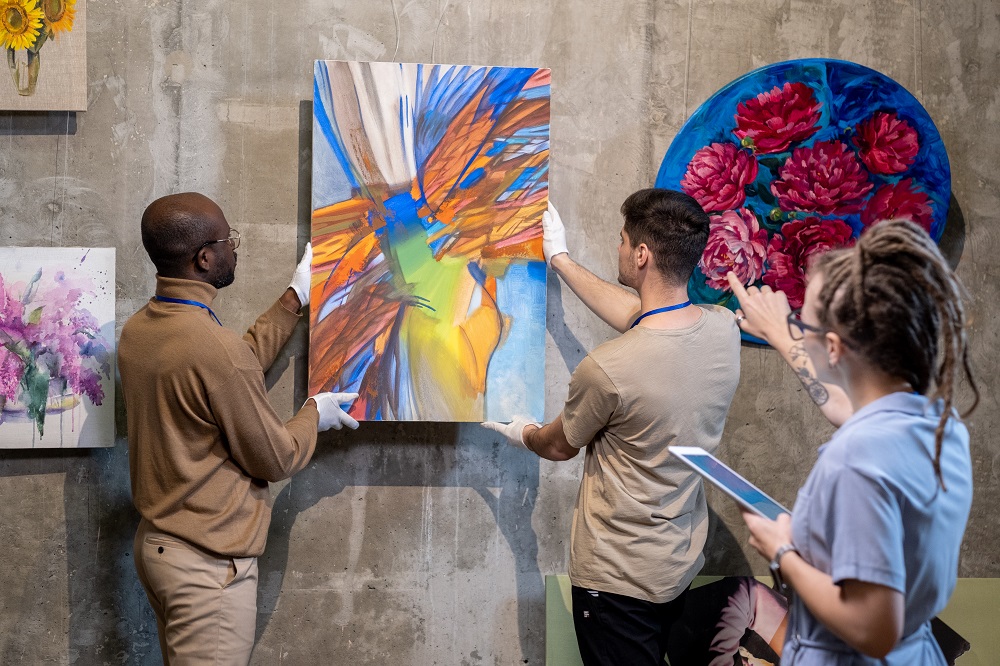
In the sphere of education in India, modern art often seems to be overlooked, relegated to the periphery of the academic spectrum. As a student who has traversed the diverse landscapes of Indian education, from traditional classrooms to the unique environment of boarding schools and experiential learning hubs, I find myself yearning for a more comprehensive exposure to the world of artistic expression, particularly modern art. The need for schools to step up, take responsibility, and actively involve students in art events is paramount, as it not only opens doors to diverse career possibilities but also cultivates a rich tapestry of creativity that can shape the coming generations.
As children, artistic expression often comes naturally. Young minds are unburdened by self-doubt or the constraints of societal expectations. Pablo Picasso quoted, “Every child is an artist. The problem is how to remain an artist once we grow up,” encapsulates a poignant reflection on the innate creative capacity inherent in every individual. Modern art is not just about canvases and paint; it is a dynamic force that ignites imagination, critical thinking, and a deeper understanding of the world. Yet, in the rigid framework of Indian education, the appreciation for modern art is often confined to the sidelines, overshadowed by the emphasis on conventional subjects like science and economics. But here’s the societal humor in this drama – we’re living in an era where a meme can garner more attention than a paragraph from a history book. The world craves creativity, and schools need to acknowledge that modern art is not just a rebellious teenager’s way of expressing angst; it’s the language of innovation and adaptability.
One of the primary reasons why schools need to prioritize modern art is its unparalleled ability to nurture creativity. In a world that is rapidly evolving, fostering creative thinking is essential. Modern art challenges students to think beyond the conventional, encouraging them to question, experiment, and envision new possibilities. By integrating modern art into the curriculum, schools provide a platform for students to express themselves in ways that transcend the boundaries of traditional subjects.
Expressive classes, extending beyond the conventional painting and sketching, open up avenues for students to convey their feelings using colors, drawings, and various artistic mediums. These sessions serve as a sanctuary where students can explore the depths of their emotions and thoughts, transcending the limitations of verbal communication. By tapping into the world of abstract expressionism, students are given the freedom to communicate through art, allowing for a richer and more nuanced understanding of their inner selves.
Art events play a pivotal role in this process. Unfortunately, such opportunities are often sparse in the Indian education landscape. Cultural wit lies in the fact that many students are oblivious to the plethora of careers awaiting them in the creative industries. Schools need to take the initiative to expose students to art exhibitions, workshops, and interactive sessions that showcase the diversity of modern artistic expressions. These events not only broaden students’ perspectives but also serve as catalysts for potential careers in the arts.
The inclusivity of modern art is another facet that makes it indispensable in schools. Unlike some traditional subjects that may seem exclusive or difficult for certain students to access, modern art is a platform where everyone can find a voice. It accommodates diverse perspectives, allowing students of varying abilities, backgrounds, and interests to engage meaningfully with the subject matter.
In the context of a globalized world, where cultural understanding and appreciation are crucial, modern art serves as a bridge between different societies and histories. It exposes students to a rich tapestry of global artistic expressions, helping them develop a sense of cultural empathy and an appreciation for diversity. By studying modern art, students gain insight into the shared human experience that transcends geographical and cultural boundaries.
To fully harness the potential of modern art in schools, it is essential for educational institutions to take proactive steps. This includes providing adequate resources for art programs, organizing art events, and encouraging collaborations with local artists and art communities. By fostering an environment where modern art is valued and celebrated, schools can empower students to explore their creativity and recognize the broader significance of artistic expression.
In addition to fostering a conducive learning environment, organizing art events within the school can prove instrumental. These events may showcase the brilliance of local art forms, such as Rajasthani art like Phad, Thapa and Sanjhi, Thangka from Arunachal Pradesh and Madhubani from Bihar. By incorporating these regional nuances into the school’s art curriculum, students gain exposure to diverse styles and cultural influences, enriching their understanding of the broader art landscape.



(Images- Phad, Thangka, and Madhubani art from India)
Moreover, numerous case studies show that exposure to art can sensitize individuals to social issues. One compelling example is the impact of community-based art projects in urban slums. The Dharavi Art Room, a non-profit organization, has initiated various art projects in the Dharavi slum in Mumbai. Through murals and community workshops, the project aims to empower residents, especially children, providing them with a creative outlet and a platform to express their stories. This case study may explore the impact of art on community dynamics, individual empowerment, and awareness of social issues within the slum. Through mural paintings and collaborative art initiatives, these projects have not only beautified the surroundings but have also brought attention to critical issues, fostering a sense of community and social responsibility.
The integration of modern art into the Indian education system is not just a matter of aesthetics but a strategic investment in nurturing well-rounded individuals. It’s time for schools across the country to recognize the transformative power of modern art and actively work towards exposing students to its myriad facets. By doing so, we not only open doors to diverse career opportunities but also cultivate a generation of individuals who approach life with creativity, curiosity, and a profound appreciation for the beauty that art brings to the world.
Authored by-
Parinya Santlani,
Student,
Paradise School, Goa
Education
Lessons Beyond a Cricket Pitch: An IPL-Inspired School Curriculum
Published
3 weeks agoon
March 27, 2024
“As we tune into the electrifying atmosphere of the Indian Premier League, where the clash of willow against leather sends pulses racing, we’re not just spectators of a thrilling spectacle. We’re witnesses to a living, breathing classroom where science dances with agility, leadership commands the play, and economics paints the bigger picture. Today, let’s embark on a journey beyond the boundary ropes, exploring how the IPL isn’t merely a cricket tournament but a dynamic, fun-filled educational odyssey.”
The Science Behind the Ball and Bat
At the heart of cricket lies a ballet of physics, each ball bowled a lesson in motion, energy, and force. The journey of a cricket ball, from the bowler’s hand to the bat, is a vivid demonstration of aerodynamics in action. Factors like air resistance, spin, and the Magnus effect collaborate to dictate the ball’s trajectory. A spinner’s delivery, curving through the air, isn’t just a challenge for the batsman but a practical example of physics. The materials of the game, especially the cricket bat made from willow, offer insights into material science, chosen for their capacity to absorb the shock of the ball’s impact and minimize damage to the hands.
The biomechanics of players, whether it’s a batsman executing a perfect cover drive or a bowler’s seam position at the point of delivery, are a testament to the human body’s potential when understood and harnessed through the principles of physics. Integrating these aspects into the curriculum can transform a standard physics lesson into a riveting session that connects students’ passion for cricket with the wonders of science.
Leadership on and off the Pitch
The IPL is a crucible of leadership, each match a case study in strategy, decision-making, and human management. Players like Virat Kohli and Rohit Sharma, with their tactical acumen and ability to inspire their teams, embody the essence of effective leadership. “Sports has taught me a lot. It helps reveal character. Sport teaches you about facing challenges, overcoming challenges on a regular basis which apply to every work of life.” Kohli once remarked, encapsulating the spirit of sportsmanship that transcends the cricket field. This philosophy can seamlessly be integrated into educational discussions, illustrating how leadership isn’t confined to high-pressure matches but is equally relevant in group projects, student councils, and beyond. MS Dhoni, a legendary cricketer and former Indian cricket team captain also believes that it is important to push every youngster to take up sports. “Be it, mentally or physically, sport teaches a lot to the students and that actually helps in practical life. Sports should play a big role in students’ life and everyone should be pushed to it,”
The Economy of Runs and Rupees
The IPL, a dazzling spectacle of cricket, is also a multi-billion-dollar industry that serves as a fascinating model for financial literacy and understanding the global economy of sports. The auction room, where players are bid on like prized artworks, offers a live demonstration of market dynamics and valuation. Sponsorships, media rights, and merchandising around the IPL introduce students to concepts of branding, revenue generation, and the economic impact of sports on national and global scales. It’s a practical lesson in economics, illustrating how supply and demand, investment, and financial management play out in one of the world’s most popular sports leagues.
IPL: A Classroom Without Walls
The IPL’s fusion of high-stakes cricket with lessons in physics, leadership, and economics presents an unparalleled opportunity to make learning interactive and engaging. It encourages students to see the relevance of their studies in real-world scenarios, thus igniting a passion for subjects that might previously have seemed abstract or disconnected from their interests.
Incorporating IPL-themed lessons into the curriculum can transform the traditional classroom, making learning a lively, participatory experience. As students analyse match strategies, calculate batting averages, or explore the economic model of the IPL, they’re not just learning; they’re engaging with the material in a way that’s both meaningful and enjoyable.
Cricket commentator and former cricketer Ian Bishop‘s words resonate deeply here: “The heart and soul of the game is what makes it so special.” In the context of education, the IPL embodies this spirit, proving that when you blend passion with learning, the classroom becomes a place of endless possibilities and discoveries.
The Indian Premier League offers more than just entertainment. It provides a vibrant, multifaceted platform for learning, encompassing physics, leadership, and economics, among other subjects. By viewing the IPL through an educational lens, we can inspire students to engage deeply with their studies, showing them that education, like cricket, can be filled with excitement, challenges, and lifelong lessons.
Knowledge
Empowering the next generation: How mentorship shapes the future of young women’s professions
Published
1 month agoon
March 8, 2024
Mentorship acts as a cornerstone in empowering women across diverse professional landscapes. Studies reveal a strong correlation between mentorship and positive career outcomes for women. Using studies and real-world examples, this article talks about how mentoring shapes women’s career prospects.
Bridging the Gender Gap: The Power of Role Models
According to a 2021 study by McKinsey & Company and Lean In, women who have mentors are more likely to advance in their careers than those who don’t. This emphasizes how important role models are. Through mentorship, mentees are encouraged to believe that “if they can do it, so can I” by seeing successful women in their area. They are thus motivated to go after big dreams and defy society norms that might have initially deterred them.
Breaking Down Barriers: Access to Networks and Resources
Mentorship transcends mere guidance; it unlocks valuable networks and resources. Mentors, often established professionals, can connect their mentees to crucial individuals and opportunities. A 2023 study by the Harvard Business Review found that women with mentors are more likely to be connected to senior leaders and receive critical career advice. These connections open doors to job opportunities, training programs, and industry knowledge, propelling women forward in their careers.
Building Confidence and Skill Development
Mentorship fosters professional development by providing constructive feedback and valuable insights. A research published in the Journal of Career Development also found that mentorship programs significantly increase women’s self-efficacy and confidence in their abilities. Through personalized guidance, mentors equip their mentees with the skills needed to excel in their chosen field. This tailored approach empowers women to navigate challenges, develop critical thinking skills, and become well-rounded professionals.
Real-World Examples: Paving the Way for Success
Mentoring has an impact that goes beyond statistics. Consider the narrative of Meta Platforms’ COO, Sheryl Sandberg. Susan Wojcicki, the former CEO of YouTube, became Sandberg’s mentor. Sandberg acknowledges Wojcicki’s crucial assistance and direction throughout her career. In similar way, former PepsiCo CEO Indra Nooyi has talked about the important influence her mentor Jack Welch had on developing her leadership style and helping her succeed. These illustrations demonstrate how mentoring can significantly alter the career paths of women in leadership roles.
Investing in the Future: A Collective Responsibility
Mentorship is not a one-sided endeavor. Moreover, It fosters a culture of learning and exchange, benefiting both mentors and mentees. Mentors gain valuable leadership experience, stay updated with industry trends through interactions with mentees, and contribute to building a more inclusive and diverse future within their organizations.
The future of various professions and the empowerment of women hinges on funding mentorship programs. While individuals can actively seek mentorship within their networks or through specialized channels, organizations can design structured programs that pair women with experienced mentors. Every effort, no matter how big or small, helps create a world in which women prosper and realize their full potential in all spheres of the workforce.
To conclude, mentoring serves as a spark for women’s professional empowerment. Through facilitating access to resources, networks, and positive role models as well as skill development, mentoring sets the stage for a day when women may successfully traverse a variety of professions and realize their full potential. Together, we can actively seek guidance and engage in mentorship programs to help establish a better future for women in the workforce.
Authored by:

Dr. Kalpana Gangaramani
Founder & Managing Director,
Target Publications Pvt. Ltd.
Education
National Safety Day: The Importance of Teaching Good Touch and Bad Touch in Schools
Published
1 month agoon
March 4, 2024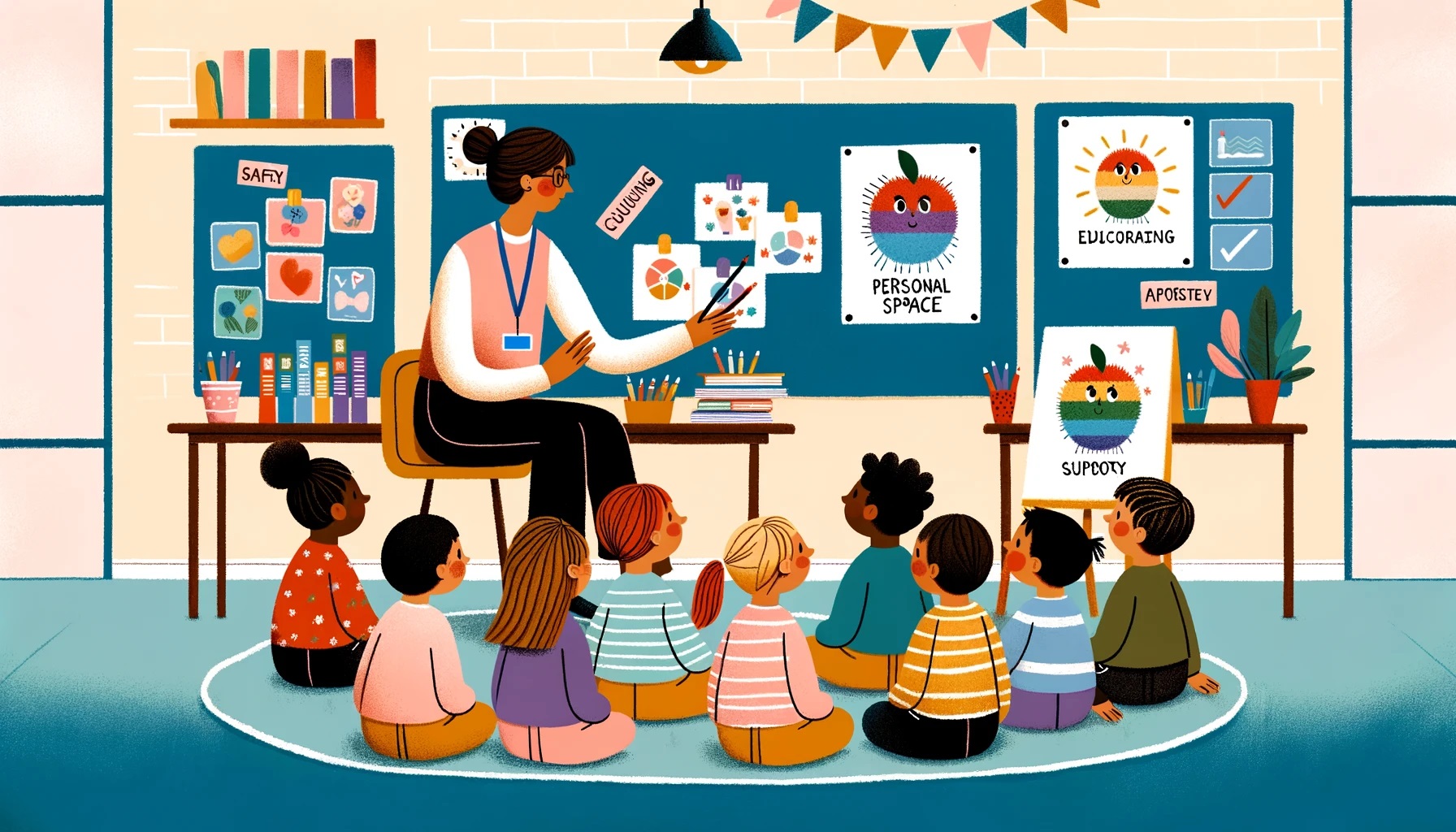
In the light of National Safety Day observed on the 4th of March each year, there’s a crucial aspect of safety that demands our attention—not just physical safety but the safety of our personal boundaries. This calls for an essential conversation about teaching children the concept of good touch and bad touch in schools, a topic that extends beyond the basics of traffic and environmental safety to the core of personal security and dignity.
Why, you might ask, is it vital to introduce this topic in the educational ecosystem? Simply put, knowledge is power. Educating children on the difference between a ‘good touch’ and a ‘bad touch’ empowers them to understand their rights, recognise inappropriate behaviour, and importantly, speak up. In an era where the safety of children should be paramount, this education acts as a shield, protecting their innocence and integrity.
But the conversation doesn’t stop with the children. It extends to the educators themselves. In the process of enlightening the young minds about safety, it’s equally critical for teachers to undergo training on the same subject. This dual approach serves a twofold purpose: a) it equips teachers to handle disclosures of inappropriate touch with sensitivity and the seriousness it demands, ensuring the right steps are taken to safeguard the child and b) it makes educators aware of their own actions, ensuring their interactions with students are always appropriate and beyond reproach.
The Protection of Children from Sexual Offences (POCSO) Act, implemented in India, underscores the importance of such education. The Act provides a legal framework to protect children against offences of sexual abuse, sexual harassment, and pornography while safeguarding the child at every stage of the judicial process. Incorporating awareness about the POCSO Act in school curriculums and teacher training programs reinforces the legal and moral responsibilities we hold towards our children.
Integrating this education into schools demands sensitivity, age-appropriate language, and a nurturing environment where children feel safe to express their concerns. It’s about building trust, ensuring every child knows they have a voice and that voice will be heard and respected.
For educators, this training should be an integral part of their professional development. Understanding the nuances of child psychology, the impact of their actions, and the legalities of child protection are essential components of their role. This knowledge not only protects the children but also the educators, fostering a safe and respectful learning environment.
Now, over to you, dear readers. Engaging in this dialogue is the first step towards change. Schools must be sanctuaries of learning, not just academically but socially and personally. As parents, educators, and members of the community, it’s our collective responsibility to advocate for and implement this crucial education. Share your thoughts, experiences, and suggestions. How can we, as a society, better protect our children? Your voice matters in shaping a safer future for our youngest citizens.
This conversation is not just necessary; it’s urgent. Let’s not shy away from it. Together, we can create a culture of safety, respect, and understanding, making every day a step towards a safer tomorrow for our children.
Education
Confronting the Crisis: Addressing Student Suicides in Kota and Beyond
Published
2 months agoon
March 1, 2024
In a deeply troubling trend that underscores a crisis in India’s educational system, recent statistics paint a harrowing picture of the mental health challenges faced by students across the country. With reported cases of suicide linked to academic pressure on the rise, the urgency to address this issue has never been more critical. In the early months of 2024 alone, there have been distressing reports from prestigious institutions like IIT Kanpur, IIT Delhi, IIT Roorkee, and IIT BHU, totaling 5 incidents of student suicides.
Kota, often dubbed as India’s coaching capital, has become synonymous with the immense pressure faced by students preparing for competitive exams. The town witnessed an all-time high of 26 student suicides last year, a stark indicator of the unbearable stress these young minds are subjected to. This year, six students in Kota have already succumbed to the pressure, including an 18-year-old JEE aspirant who deemed herself a “loser” for not being able to meet the expectations set by the highly competitive exam.
These incidents are not isolated to Kota or the IITs; they are symptomatic of a larger, systemic issue plaguing educational institutions across India. A 17-year-old intermediate student in Telangana’s Adilabad district, for example, took his own life after being denied entry to an exam for arriving late, a decision that pushed him towards a tragic end.
The narrative emerging from these incidents is clear: the educational system, coupled with societal expectations, is creating an environment where failure is not seen as a part of learning but as an insurmountable setback. This mindset is contributing to a dangerous escalation in the student suicide rate, particularly in coaching hubs like Kota, where the pressure to succeed in exams such as NEET, UPSC, and JEE is immense.
It is high time that schools, universities, and parents across India recognize the gravity of this issue. The relentless pursuit of academic excellence at the cost of students’ mental health is an unsustainable and harmful practice. Educators and caregivers must foster an environment where failure is acknowledged as a step towards growth and where students are encouraged to explore their passions without the fear of judgment.
Moreover, the implementation of comprehensive mental health programs and the promotion of open conversations about failure and resilience can significantly mitigate the risks associated with academic pressure. It is crucial for educational institutions to partner with mental health professionals to provide students with the support they need to navigate the challenges of their academic journeys.
So what is eventually required of the education sector? the alarming rate of student suicides in India is a call to action for all stakeholders in the educational sector. The tragic losses experienced in places like Kota serve as a stark reminder of the need to reevaluate our approach to education and student well-being. By cultivating an environment that values individuality, encourages exploration, and provides robust support systems, we can work towards a future where the pursuit of knowledge is not marred by the fear of failure but is celebrated as a path to personal and intellectual growth.
Education
World NGO Day: Including Social Service and Philanthropy in Curriculum
Published
2 months agoon
February 27, 2024
On World NGO Day, celebrated each 27th of February, we’re reminded of the pivotal role NGOs play in fostering social change and development. It’s an opportune moment to reflect on a critical gap in our education system—integrating social service into school curriculums. While Indian schools commendably cover moral science and discuss the multifaceted challenges of poverty, they often skirt around a crucial lesson: the importance of giving back to society, a principle that acknowledges our inherent privileges.
The privilege of accessing education and enjoying life’s luxuries is not a universal given; it’s a blessing. Recognizing this privilege entails acknowledging our responsibility to contribute positively to society, underscoring the necessity of philanthropy in our educational ethos. However, mere acknowledgment isn’t enough; action is imperative. This is where the collaboration with NGOs becomes invaluable.
Consider the transformative potential of inviting NGOs working in education into our schools. These organizations, such as Pratham, Akshaya Patra, and Teach For India, are not just entities; they are repositories of real-world experiences and agents of change. By partnering with these NGOs, schools can offer students more than theoretical knowledge; they can provide them with hands-on experiences in social service, embedding the value of giving back into the fabric of their education.
Imagine the impact of integrating assignments that require active participation in social causes—organizing donation drives, participating in animal welfare activities, or contributing to environmental conservation efforts. Such initiatives do more than inculcate a sense of responsibility; they foster empathy, cultivate a sense of community, and prepare students to be conscientious citizens.
The benefits of integrating social service into school curriculums extend beyond moral and ethical development. They equip students with critical life skills—teamwork, leadership, problem-solving, and empathy—preparing them for the challenges of the real world. Moreover, these engagements offer tangible experiences of impact, teaching students that their actions can indeed make a difference. For example, organising donation drives and animal welfare camps where students can be the volunteers for a better, bigger cause is a great way to include social services into our curriculum.
The partnership between schools and NGOs can take various forms, from guest lectures and workshops to long-term projects and internships. These collaborations provide a platform for NGOs to raise awareness about their causes and for students to engage with these issues deeply and meaningfully.
By making social service an integral part of the curriculum, we can ensure that education transcends academic achievements to include the development of well-rounded individuals who are aware of their social responsibilities. It’s about creating a culture of giving back, fostering a generation that is not only educated but also empathetic and engaged with the world’s pressing challenges.
So, let’s commit to enriching our educational systems with the values of social service and philanthropy. Let’s embrace the opportunity to partner with NGOs and transform our students into not just scholars but also compassionate contributors to society. In doing so, we pay forward our blessings and take meaningful steps towards building a more equitable and caring world.
Education
Education or Profit? Bombay High Court Calls for Accessible Learning for All
Published
2 months agoon
February 23, 2024
In a recent statement that hits home for many, the Bombay High Court pointed out a harsh truth: education, once considered sacred in our culture, has now become something many can hardly afford. The court stressed that it’s the government’s duty to make sure everyone in the country has access to good quality education, highlighting the importance of education in the growth and development of society.
Judges AS Chandurkar and Jitendra Jain shared their thoughts during a case involving a request to open a new college. They mentioned a concern that only letting groups with previous experience in education open new colleges could unfairly keep new players out of the game. This could lead to a few big names controlling the education sector, which isn’t fair to everyone else. Yet, they also acknowledged that experience is important to make sure these new institutions can actually provide good education. While acknowledging the importance of experience in managing educational institutions, the justices called for a more balanced approach. They suggested the establishment of clear, quantifiable parameters for evaluating applications for new colleges, thereby ensuring a fair and competitive educational landscape.
This judicial intervention is a stark reminder of the ongoing transformation of the education sector into an ‘education industry,’ where the pursuit of profit often overshadows the noble mission of disseminating knowledge.
With tuition fees skyrocketing and private coaching centers popping up everywhere, education is becoming more about money and less about learning and growth. It’s a wake-up call for those running educational institutions to remember the real reason they’re in this field – not to make a profit, but to educate and shape future generations.
This scenario demands a reevaluation of our priorities. Education should not be a luxury only a few can afford. It’s a fundamental right that paves the way for a better future for individuals and society as a whole. It’s time for educational institutions to reflect on their purpose and for the government to take action to ensure that quality education is accessible to everyone, regardless of their financial status. This entails not only regulating fees and ensuring transparency in the functioning of educational institutions but also investing in public education to enhance its quality and reach.
“Although ‘education’ is a pious in our culture but with change in time it has taken a different colour and has become unaffordable. It is the State’s Constitutional responsibility to ensure quality education reaches all the citizens of this country to achieve the growth and development of humanity”, the court said.
The Bombay High Court’s remarks are a crucial reminder for us all. It’s a call to action to prevent the commercialization of education from overshadowing its true value and to work towards a system where education is seen not as an industry, but as a vital service that nurtures humanity’s growth and development.
(With inputs from Livelaw.in)
Inspiration
Hidden Figures: A Film Every Student Should Watch and Why
Published
2 months agoon
February 13, 2024
In the vast tapestry of cinematic storytelling, few films carry the weight of transforming our understanding of history and the unsung heroes within it quite like “Hidden Figures.” This masterpiece not only unfolds the extraordinary tale of three African-American women who were pivotal to NASA’s success in the space race but also serves as a beacon of inspiration for students across the globe. As the world recently celebrated the International Day of Women and Girls in Science on 11th February, it is imperative to delve into why “Hidden Figures” is a must-watch for every student.
“Hidden Figures” brings to light the incredible journey of Katherine Johnson, Dorothy Vaughan, and Mary Jackson, portrayed with compelling depth by Taraji P. Henson, Octavia Spencer, and Janelle Monae, respectively. These brilliant minds overcame the dual hurdles of racial and gender bias to lay the groundwork for John Glenn’s historic orbit around Earth. Their story is not just a chapter of NASA’s triumphs but a testament to the indomitable spirit of those who dare to dream big and defy societal constraints.
For students, “Hidden Figures” is much more than a history lesson; it is an exploration of the values of perseverance, integrity, and teamwork. The film adeptly captures the essence of these values, showing that success is not the reserve of a privileged few but achievable by anyone with the talent and determination, regardless of their background. This is the story of three strong women who are independent, making a way of their own in a time where people do not even believe that NASA hires women and that too women of colour. When they ask for what they deserve, they are frowned upon and rejected. They are expected to know what their place is and what is the way to look like a white person. Still, these women thrive. Today, the situation has improved for better but our students should understand what it took for the trailblazers and women like these three to bring the world where it is today.
The narrative rhythm of “Hidden Figures” mirrors that of an underdog story, making it relatable and engaging for a younger audience. It offers a linear and steady progression, showcasing the personal and professional challenges these women faced, their initial setbacks, and their ultimate triumph. Furthermore, the film’s emphasis on education and intellectual prowess as tools for breaking barriers is a critical takeaway for students. It highlights the importance of STEM (Science, Technology, Engineering, and Mathematics) education and the role it plays in shaping the future. “Hidden Figures” demonstrates that knowledge and skill are powerful agents of change, encouraging students to pursue their interests in these fields with zeal.
The film does not shy away from the harsh realities of the era it depicts but chooses to focus on the triumph of intellect and determination over discrimination and adversity. This balanced storytelling approach makes “Hidden Figures” an educational tool that transcends the classroom, imparting lessons of equality, respect, and the pursuit of excellence.
Hidden Figures is more than just a film; it is a catalyst for change, inspiring students to recognize and challenge the societal limitations placed upon them. It encourages a deeper appreciation for the contributions of women and minorities in science and technology, urging a more inclusive recognition of achievement in these fields. For these reasons and more, it is a film that every student should watch, serving as a reminder that history is made by those who dare to believe in the possibility of the impossible.
Newsletter

Young Birders’ Workshop Opens Registration for Children Aged 10-13 Years

STEMpedia Successfully Completed Codeavour 5.0- India’s National Innovation Fest

Reviving School Education: Countering the Coaching Centre Dominance
CBSE to Initiate Pilot for National Credit System in Grades 6, 9, and 11

The Role of Marketing in Education: Navigating the New Educational Landscape

From Overwhelmed to Empowered: Strengthening Educator Skills for Success

NCERT Introduces Bridge Month Programme for Class 6 Amid Textbook Transition

Indian Embassy Advocates for India-US Collaboration in Education Sector

Nurturing Healthy Behaviors: The Role of Schools in Shaping Health-Conscious Citizens

CBSE Updates Exam Structure for 11th & 12th Class; Concept-based Questions Now 50% of Weightage

Sharing the spotlight: When parent and child take board exams together

Rebalancing the Scales: The Urgent Call for Humanities in STEM-Dominated Curricula

Palette of Possibilities: Nurturing Creativity in Schools through Modern Art

Empowering Minds: The Journey of My Guide Inside with Christa Campsall

The Potential of an Entrepreneurial Development Programme for Primary School Students

FPSB India and IIM Bangalore Forge Strategic Partnership to Advance Financial Education

1 in 6 School-Age Children Face Cyberbullying: Calls for Immediate Action

GD Goenka Group To Establish 12 New Schools from April 2024

World Theatre Day: Let Theatre Arts Make Classroom’s Showtime Spectacular!

Lessons Beyond a Cricket Pitch: An IPL-Inspired School Curriculum

Post-pandemic: Embracing Well-being in India’s Schools with My Guide Inside

The Intersection of Happiness and Technology in Education

India-Bhutan Strengthen Ties: Focus on STEM Education

Life of My Father: Dr. Jagdish Gandhi, a Pioneer in Education

Jharkhand Introduces Innovative Schemes to Support Higher Education Aspirants

Life of My Father: Dr. Jagdish Gandhi, a Pioneer in Education

Post-pandemic: Embracing Well-being in India’s Schools with My Guide Inside

Mayo College Announces New Leadership

Empowering the Future: The Success of Beti Bachao Beti Padhao in Girls’ Education

Is Students’ Data in Safe Hands in a Digital World?

Central Government Sets New Framework for Coaching Centres

FPSB India and IIM Bangalore Forge Strategic Partnership to Advance Financial Education

Radio Broadcasting in Schools: Creating a Platform for Student Voices

India to recognise Farsi as a classical language under New Education Policy

Farewell to a Pioneer: Dr. Jagdish Gandhi’s Enduring Legacy in Education

Anticipating a Progressive Leap: The Education Sector’s Hopes for Union Budget 2024

Kerala Introduces ‘Water-Bell’ Initiative in Schools to Boost Hydration

Lexicon Schools Spark Innovation with STEAM Fest

The Need to Preserve Newspapers for Bias-Free Education

A Voice for All Ages: The Enduring Legacy of Ameen Sayani in Indian Education

Target Publications hosts workshop for grade 10th and 12th students of Snehasadan Shelter Homes and Reap NGO

Seth M. R. Jaipuria School launches CBSE School in Bhiwadi, Rajasthan

The Rising Leaders’ Summit 2024: A Timeless Learning for Future Educational Leaders

From 2025-26, Indian Students to Get Two Opportunities to Sit for Board Exams

International Women’s Day 2024: Are We Not Special?

ISRO Launches Young Scientist Programme 2024 for Budding Space Enthusiasts

Can Hindi Become the Next Global Language?

Teach for India Invites Applications for its 2024 Fellowship Program

Ministry of Women and Child Development Unveils National Curriculum Framework for Early Childhood Care and Education

World Theatre Day: Let Theatre Arts Make Classroom’s Showtime Spectacular!
SGEF2023 | Special Address by Rama Datt, Trustee, Maharaja Sawai Man Singh II Trust, Jaipur

ScooNews | After Movie | ScooNews Global Educators Fest 2023

Aftermovie | NIES2 UP Chapter | 21 Jan 2023

WEBINAR | Gamification in Education: How Digital Badges Can Boost Student Motivation and Engagement

ScooNews | WEBINAR| Importance of Physical Activity for Children at School | Plaeto

SCOONEWS | WEBINAR | WHY DIGITIZING YOUR SCHOOL IS A MUST | TEACHMINT

Keynote Address | Lakshyaraj Singh Mewar

Anurag Tripathi, Secretary, CBSE at SGEF2022

How schools can nurture every student’s genius

Aftermovie | SGEF2022 | Jaipur

Li Andersson | Minister of Education | Finland

Anurag Tripathi, Secretary, Central Board of Secondary Education (CBSE) discusses NEP2020

ScooNews | Early Ed Asia 2019 | Aftermovie
#PodarECEconf : Pursuing quality ECE

#CBSE Class XII #Results #Highlights

The interesting story of India’s educational system | Adhitya Iyer

A young scientist’s quest for clean water

The Danger of Silence: Clint Smith

National Digital Library of India is an initiative by HRD Ministry

Remembering Kalpana Chawla on her birthday!

Message from Sadhguru for Students!
Message from Sadhguru for Students!

The Untapped Genius That Could Change Science for the Better

Eddy Zhong: How school makes kids less intelligent TEDxYouth@Beacon

#TEDxCanberra : What if every child had access to music education…
Trending
-
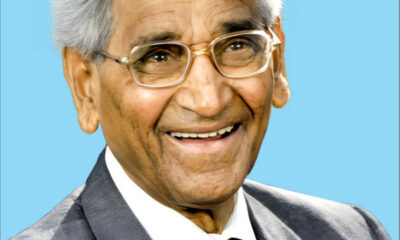
 Inspiration1 month ago
Inspiration1 month agoLife of My Father: Dr. Jagdish Gandhi, a Pioneer in Education
-

 Education4 weeks ago
Education4 weeks agoPost-pandemic: Embracing Well-being in India’s Schools with My Guide Inside
-
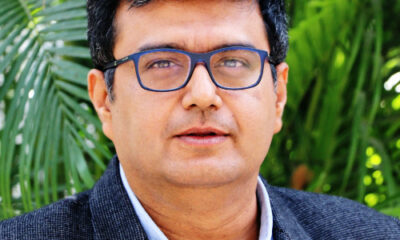
 Education3 months ago
Education3 months agoMayo College Announces New Leadership
-
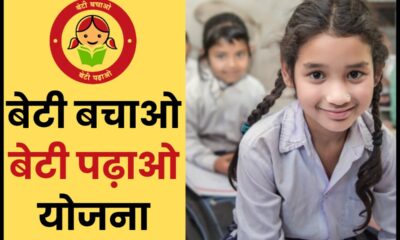
 Education3 months ago
Education3 months agoEmpowering the Future: The Success of Beti Bachao Beti Padhao in Girls’ Education
-
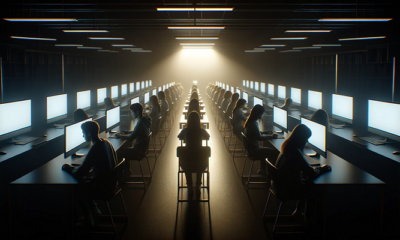
 Knowledge3 months ago
Knowledge3 months agoIs Students’ Data in Safe Hands in a Digital World?
-
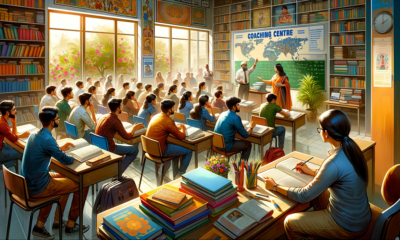
 Education3 months ago
Education3 months agoCentral Government Sets New Framework for Coaching Centres
-
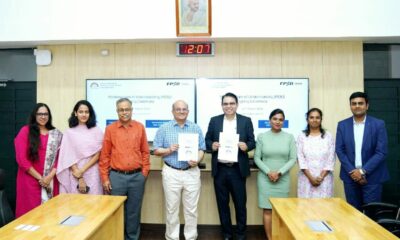
 Education3 weeks ago
Education3 weeks agoFPSB India and IIM Bangalore Forge Strategic Partnership to Advance Financial Education
-
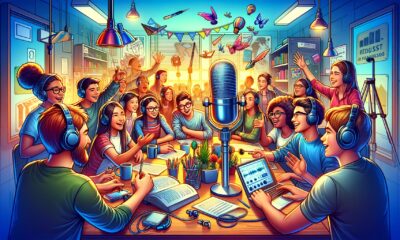
 Education2 months ago
Education2 months agoRadio Broadcasting in Schools: Creating a Platform for Student Voices
-
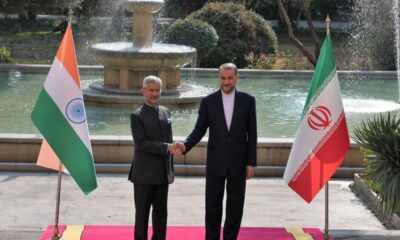
 Education3 months ago
Education3 months agoIndia to recognise Farsi as a classical language under New Education Policy
-

 Education3 months ago
Education3 months agoFarewell to a Pioneer: Dr. Jagdish Gandhi’s Enduring Legacy in Education



